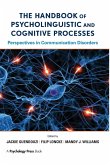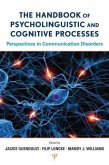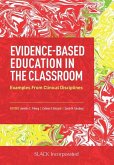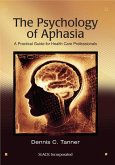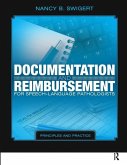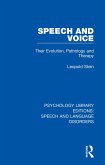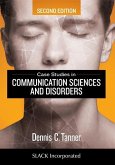The Routledge International Handbook of Psycholinguistic and Cognitive Processes
Herausgeber: Guendouzi, Jackie; Williams, Mandy J.; Loncke, Filip
The Routledge International Handbook of Psycholinguistic and Cognitive Processes
Herausgeber: Guendouzi, Jackie; Williams, Mandy J.; Loncke, Filip
- Gebundenes Buch
- Merkliste
- Auf die Merkliste
- Bewerten Bewerten
- Teilen
- Produkt teilen
- Produkterinnerung
- Produkterinnerung
This handbook provides a comprehensive overview of the theories of cognition and language processing relevant to the field of communication disorders. Thoroughly updated in its second edition, it explores a range of topics and issues that illustrate the relevance of a dynamic interaction between both theoretical and applied clinical work.
Andere Kunden interessierten sich auch für
![The Handbook of Psycholinguistic and Cognitive Processes The Handbook of Psycholinguistic and Cognitive Processes]() The Handbook of Psycholinguistic and Cognitive Processes76,99 €
The Handbook of Psycholinguistic and Cognitive Processes76,99 €![The Handbook of Psycholinguistic and Cognitive Processes The Handbook of Psycholinguistic and Cognitive Processes]() The Handbook of Psycholinguistic and Cognitive Processes305,99 €
The Handbook of Psycholinguistic and Cognitive Processes305,99 €![Evidence-Based Education in the Classroom Evidence-Based Education in the Classroom]() Jennifer FribergEvidence-Based Education in the Classroom93,99 €
Jennifer FribergEvidence-Based Education in the Classroom93,99 €![The Psychology of Aphasia The Psychology of Aphasia]() Dennis TannerThe Psychology of Aphasia88,99 €
Dennis TannerThe Psychology of Aphasia88,99 €![Documentation and Reimbursement for Speech-Language Pathologists Documentation and Reimbursement for Speech-Language Pathologists]() Nancy SwigertDocumentation and Reimbursement for Speech-Language Pathologists99,99 €
Nancy SwigertDocumentation and Reimbursement for Speech-Language Pathologists99,99 €![Speech and Voice Speech and Voice]() Leopold SteinSpeech and Voice52,99 €
Leopold SteinSpeech and Voice52,99 €![Case Studies in Communication Sciences and Disorders Case Studies in Communication Sciences and Disorders]() Dennis TannerCase Studies in Communication Sciences and Disorders109,99 €
Dennis TannerCase Studies in Communication Sciences and Disorders109,99 €-
-
-
This handbook provides a comprehensive overview of the theories of cognition and language processing relevant to the field of communication disorders. Thoroughly updated in its second edition, it explores a range of topics and issues that illustrate the relevance of a dynamic interaction between both theoretical and applied clinical work.
Hinweis: Dieser Artikel kann nur an eine deutsche Lieferadresse ausgeliefert werden.
Hinweis: Dieser Artikel kann nur an eine deutsche Lieferadresse ausgeliefert werden.
Produktdetails
- Produktdetails
- Verlag: Routledge
- 2. Auflage
- Seitenzahl: 598
- Erscheinungstermin: 2. Juni 2023
- Englisch
- Abmessung: 260mm x 183mm x 36mm
- Gewicht: 1304g
- ISBN-13: 9781032068664
- ISBN-10: 1032068663
- Artikelnr.: 67516936
- Herstellerkennzeichnung
- Libri GmbH
- Europaallee 1
- 36244 Bad Hersfeld
- gpsr@libri.de
- Verlag: Routledge
- 2. Auflage
- Seitenzahl: 598
- Erscheinungstermin: 2. Juni 2023
- Englisch
- Abmessung: 260mm x 183mm x 36mm
- Gewicht: 1304g
- ISBN-13: 9781032068664
- ISBN-10: 1032068663
- Artikelnr.: 67516936
- Herstellerkennzeichnung
- Libri GmbH
- Europaallee 1
- 36244 Bad Hersfeld
- gpsr@libri.de
Jackie Guendouzi, Ph.D., is a Professor and department head of Health and Human Sciences at Southeastern Louisiana University, United States. Filip Loncke, Ph.D., is a Professor at the University of Virginia's School of Education and Human Development, United States. Mandy J. Williams, Ph.D., CCC-SLP, is an Associate Professor of Communication Sciences and Disorders at the University of South Dakota, United States.
Psycholinguistics: Some Basic Considerations SECTION I: Language Processing
1. The Development of Linguistic Systems: Insights From Evolution 2.
Emergentism and Language Disorders 3. Healthy Aging and Communication: The
Complexities of, Um, Fluent Speech Production 4. Working Memory and
Attention in Language Use 5. Neurobiological Bases of the Semantic
Processing of Words 6. From Phonemes to Discourse: Event-Related Brain
Potentials (Erps) and Paradigms For Investigating Normal and Abnormal
Language Processing 7. Early Word Learning: Reflections on Behavior,
Connectionist Models, and Brain Mechanisms Indexed by ERP Components 8.
Connectionist Models of Aphasia Revisited 9. Modeling the Attentional
Control of Vocal Utterances: From Wernicke to WEAVER++ 10. Theories of
Semantic Processing 11. Language Comprehension: A Neurocognitive
Perspective 12. Familiar Language: Formulaic Expressions, Lexical Bundles,
and Collocations in Mind and Brain 13. Relevance Theory and Language
Interpretation 14. How Similarity Influences Word Recognition: The Effect
of Neighbors 15. Two Theories of Speech Production and Perception 16.
Psycholinguistic Validity and Phonological Representation 17. From
Phonology to Articulation: A Neurophonetic View SECTION II: Developmental
Disorders 18. Temporal Processing in Children With Language Disorders 19.
Language Processing in Children With Language Impairment 20.
Grammatical-Specific Language Impairment: A Window Onto Domain Specificity
21. The Developing Mental Lexicon of Children With Specific Language
Impairment 22. Screening and interventions for developmental fluency
disorders 23. An Approach to Differentiating Bilingualism and Language
Impairment 24. Constraints-based nonlinear phonology: Clinical applications
for English, Kuwaiti Arabic, and Mandarin 25. Bilingual Children with SLI:
Theories, Research and Future Directions SECTION III: Acquired Disorders
26. Apraxia of Speech: From Psycholinguistic Theory to the
Conceptualization and Management of an Impairment 27. The Role of Memory
and Attention in Aphasic Language Performance 28. Remediation of Theory of
Mind Impairments in Adults with Acquired Brain Injury 29. Breakdown of
Semantics in Aphasia and Dementia: A Role for Attention? 30.
Neurolinguistic and Neurocognitive Considerations of Language Organization
and Processing in Multilingual Individuals SECTION IV: Language and Other
Modalities 31. Gestures and Growth Points in Language Disorders 32. Neural
Organization of Language: Clues From Sign Language Aphasia 33. Sign
Language and Sign Language Research 34. Psycholinguistics and Augmentative
and Alternative Communication 35. Epilogue: Applying Psycholinguistic
Theories to Conversation Data in the Context of Dementia
1. The Development of Linguistic Systems: Insights From Evolution 2.
Emergentism and Language Disorders 3. Healthy Aging and Communication: The
Complexities of, Um, Fluent Speech Production 4. Working Memory and
Attention in Language Use 5. Neurobiological Bases of the Semantic
Processing of Words 6. From Phonemes to Discourse: Event-Related Brain
Potentials (Erps) and Paradigms For Investigating Normal and Abnormal
Language Processing 7. Early Word Learning: Reflections on Behavior,
Connectionist Models, and Brain Mechanisms Indexed by ERP Components 8.
Connectionist Models of Aphasia Revisited 9. Modeling the Attentional
Control of Vocal Utterances: From Wernicke to WEAVER++ 10. Theories of
Semantic Processing 11. Language Comprehension: A Neurocognitive
Perspective 12. Familiar Language: Formulaic Expressions, Lexical Bundles,
and Collocations in Mind and Brain 13. Relevance Theory and Language
Interpretation 14. How Similarity Influences Word Recognition: The Effect
of Neighbors 15. Two Theories of Speech Production and Perception 16.
Psycholinguistic Validity and Phonological Representation 17. From
Phonology to Articulation: A Neurophonetic View SECTION II: Developmental
Disorders 18. Temporal Processing in Children With Language Disorders 19.
Language Processing in Children With Language Impairment 20.
Grammatical-Specific Language Impairment: A Window Onto Domain Specificity
21. The Developing Mental Lexicon of Children With Specific Language
Impairment 22. Screening and interventions for developmental fluency
disorders 23. An Approach to Differentiating Bilingualism and Language
Impairment 24. Constraints-based nonlinear phonology: Clinical applications
for English, Kuwaiti Arabic, and Mandarin 25. Bilingual Children with SLI:
Theories, Research and Future Directions SECTION III: Acquired Disorders
26. Apraxia of Speech: From Psycholinguistic Theory to the
Conceptualization and Management of an Impairment 27. The Role of Memory
and Attention in Aphasic Language Performance 28. Remediation of Theory of
Mind Impairments in Adults with Acquired Brain Injury 29. Breakdown of
Semantics in Aphasia and Dementia: A Role for Attention? 30.
Neurolinguistic and Neurocognitive Considerations of Language Organization
and Processing in Multilingual Individuals SECTION IV: Language and Other
Modalities 31. Gestures and Growth Points in Language Disorders 32. Neural
Organization of Language: Clues From Sign Language Aphasia 33. Sign
Language and Sign Language Research 34. Psycholinguistics and Augmentative
and Alternative Communication 35. Epilogue: Applying Psycholinguistic
Theories to Conversation Data in the Context of Dementia
Psycholinguistics: Some Basic Considerations SECTION I: Language Processing
1. The Development of Linguistic Systems: Insights From Evolution 2.
Emergentism and Language Disorders 3. Healthy Aging and Communication: The
Complexities of, Um, Fluent Speech Production 4. Working Memory and
Attention in Language Use 5. Neurobiological Bases of the Semantic
Processing of Words 6. From Phonemes to Discourse: Event-Related Brain
Potentials (Erps) and Paradigms For Investigating Normal and Abnormal
Language Processing 7. Early Word Learning: Reflections on Behavior,
Connectionist Models, and Brain Mechanisms Indexed by ERP Components 8.
Connectionist Models of Aphasia Revisited 9. Modeling the Attentional
Control of Vocal Utterances: From Wernicke to WEAVER++ 10. Theories of
Semantic Processing 11. Language Comprehension: A Neurocognitive
Perspective 12. Familiar Language: Formulaic Expressions, Lexical Bundles,
and Collocations in Mind and Brain 13. Relevance Theory and Language
Interpretation 14. How Similarity Influences Word Recognition: The Effect
of Neighbors 15. Two Theories of Speech Production and Perception 16.
Psycholinguistic Validity and Phonological Representation 17. From
Phonology to Articulation: A Neurophonetic View SECTION II: Developmental
Disorders 18. Temporal Processing in Children With Language Disorders 19.
Language Processing in Children With Language Impairment 20.
Grammatical-Specific Language Impairment: A Window Onto Domain Specificity
21. The Developing Mental Lexicon of Children With Specific Language
Impairment 22. Screening and interventions for developmental fluency
disorders 23. An Approach to Differentiating Bilingualism and Language
Impairment 24. Constraints-based nonlinear phonology: Clinical applications
for English, Kuwaiti Arabic, and Mandarin 25. Bilingual Children with SLI:
Theories, Research and Future Directions SECTION III: Acquired Disorders
26. Apraxia of Speech: From Psycholinguistic Theory to the
Conceptualization and Management of an Impairment 27. The Role of Memory
and Attention in Aphasic Language Performance 28. Remediation of Theory of
Mind Impairments in Adults with Acquired Brain Injury 29. Breakdown of
Semantics in Aphasia and Dementia: A Role for Attention? 30.
Neurolinguistic and Neurocognitive Considerations of Language Organization
and Processing in Multilingual Individuals SECTION IV: Language and Other
Modalities 31. Gestures and Growth Points in Language Disorders 32. Neural
Organization of Language: Clues From Sign Language Aphasia 33. Sign
Language and Sign Language Research 34. Psycholinguistics and Augmentative
and Alternative Communication 35. Epilogue: Applying Psycholinguistic
Theories to Conversation Data in the Context of Dementia
1. The Development of Linguistic Systems: Insights From Evolution 2.
Emergentism and Language Disorders 3. Healthy Aging and Communication: The
Complexities of, Um, Fluent Speech Production 4. Working Memory and
Attention in Language Use 5. Neurobiological Bases of the Semantic
Processing of Words 6. From Phonemes to Discourse: Event-Related Brain
Potentials (Erps) and Paradigms For Investigating Normal and Abnormal
Language Processing 7. Early Word Learning: Reflections on Behavior,
Connectionist Models, and Brain Mechanisms Indexed by ERP Components 8.
Connectionist Models of Aphasia Revisited 9. Modeling the Attentional
Control of Vocal Utterances: From Wernicke to WEAVER++ 10. Theories of
Semantic Processing 11. Language Comprehension: A Neurocognitive
Perspective 12. Familiar Language: Formulaic Expressions, Lexical Bundles,
and Collocations in Mind and Brain 13. Relevance Theory and Language
Interpretation 14. How Similarity Influences Word Recognition: The Effect
of Neighbors 15. Two Theories of Speech Production and Perception 16.
Psycholinguistic Validity and Phonological Representation 17. From
Phonology to Articulation: A Neurophonetic View SECTION II: Developmental
Disorders 18. Temporal Processing in Children With Language Disorders 19.
Language Processing in Children With Language Impairment 20.
Grammatical-Specific Language Impairment: A Window Onto Domain Specificity
21. The Developing Mental Lexicon of Children With Specific Language
Impairment 22. Screening and interventions for developmental fluency
disorders 23. An Approach to Differentiating Bilingualism and Language
Impairment 24. Constraints-based nonlinear phonology: Clinical applications
for English, Kuwaiti Arabic, and Mandarin 25. Bilingual Children with SLI:
Theories, Research and Future Directions SECTION III: Acquired Disorders
26. Apraxia of Speech: From Psycholinguistic Theory to the
Conceptualization and Management of an Impairment 27. The Role of Memory
and Attention in Aphasic Language Performance 28. Remediation of Theory of
Mind Impairments in Adults with Acquired Brain Injury 29. Breakdown of
Semantics in Aphasia and Dementia: A Role for Attention? 30.
Neurolinguistic and Neurocognitive Considerations of Language Organization
and Processing in Multilingual Individuals SECTION IV: Language and Other
Modalities 31. Gestures and Growth Points in Language Disorders 32. Neural
Organization of Language: Clues From Sign Language Aphasia 33. Sign
Language and Sign Language Research 34. Psycholinguistics and Augmentative
and Alternative Communication 35. Epilogue: Applying Psycholinguistic
Theories to Conversation Data in the Context of Dementia


